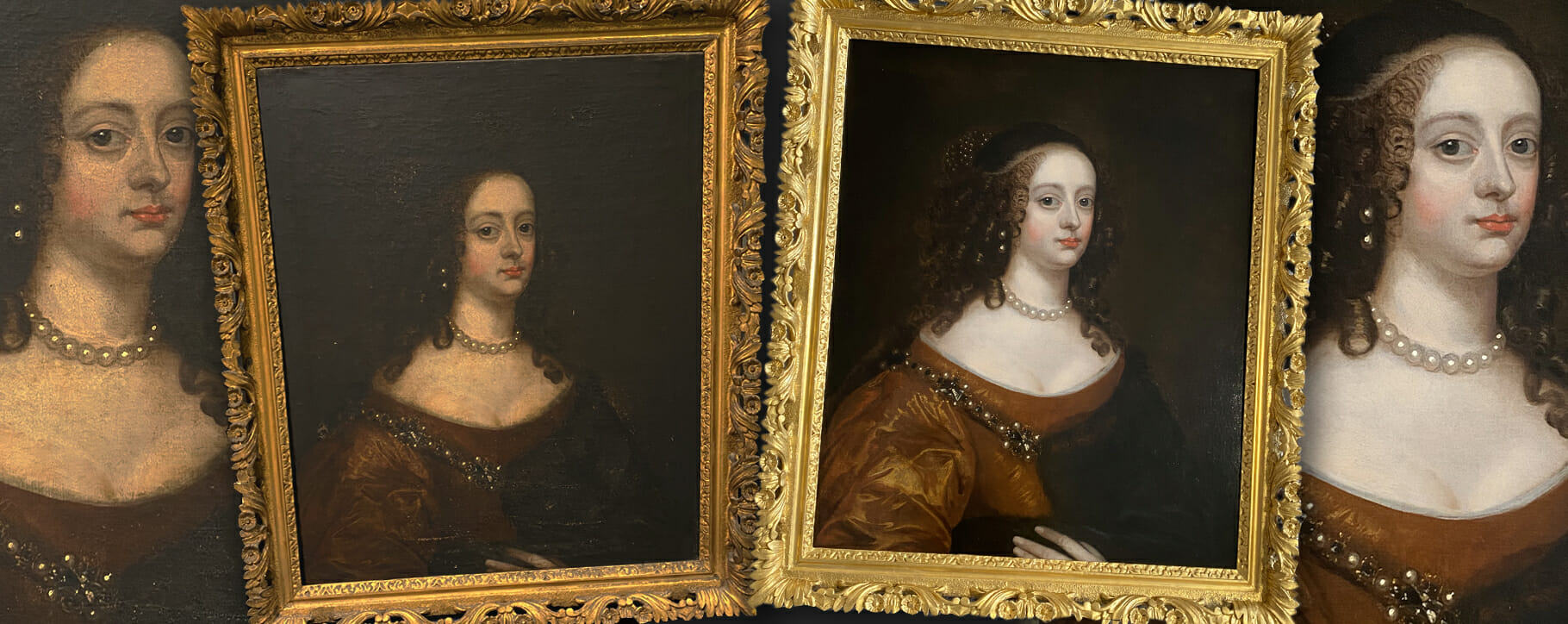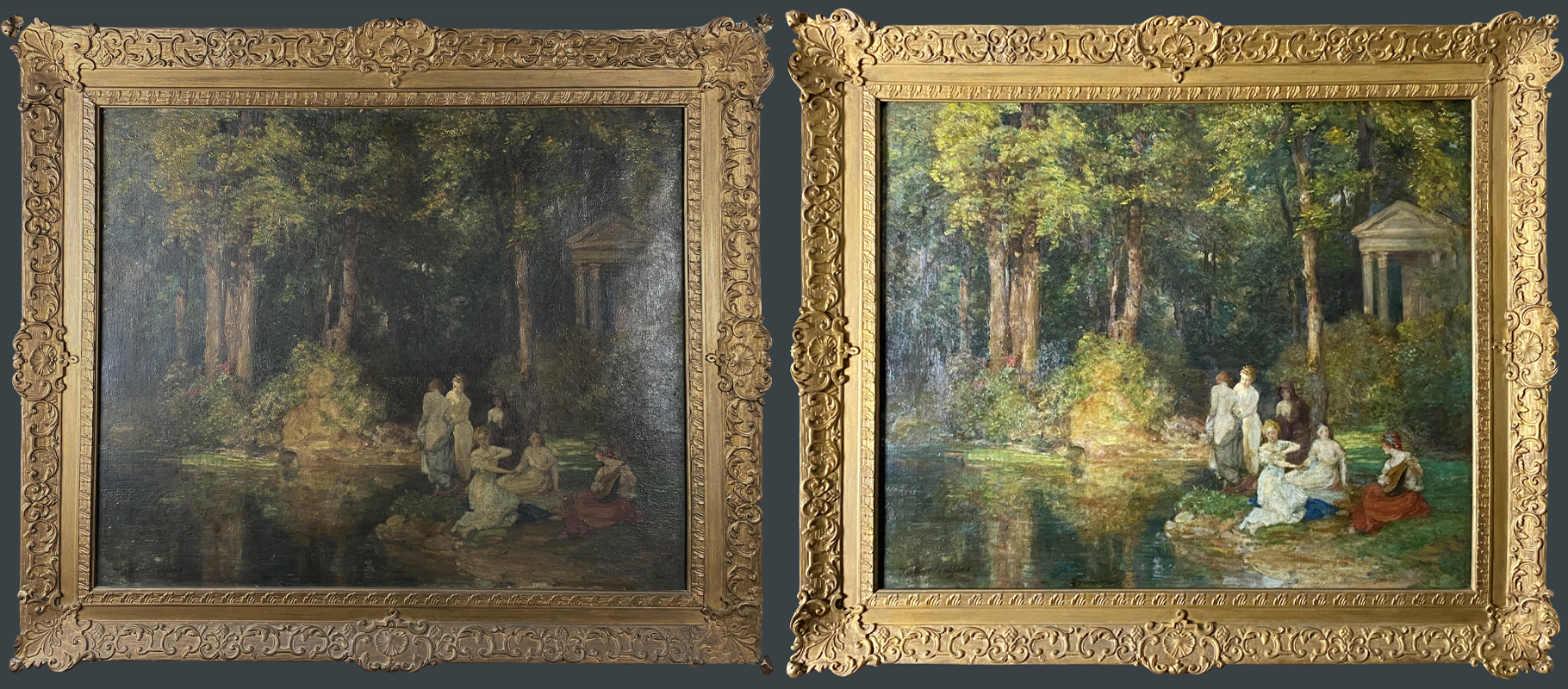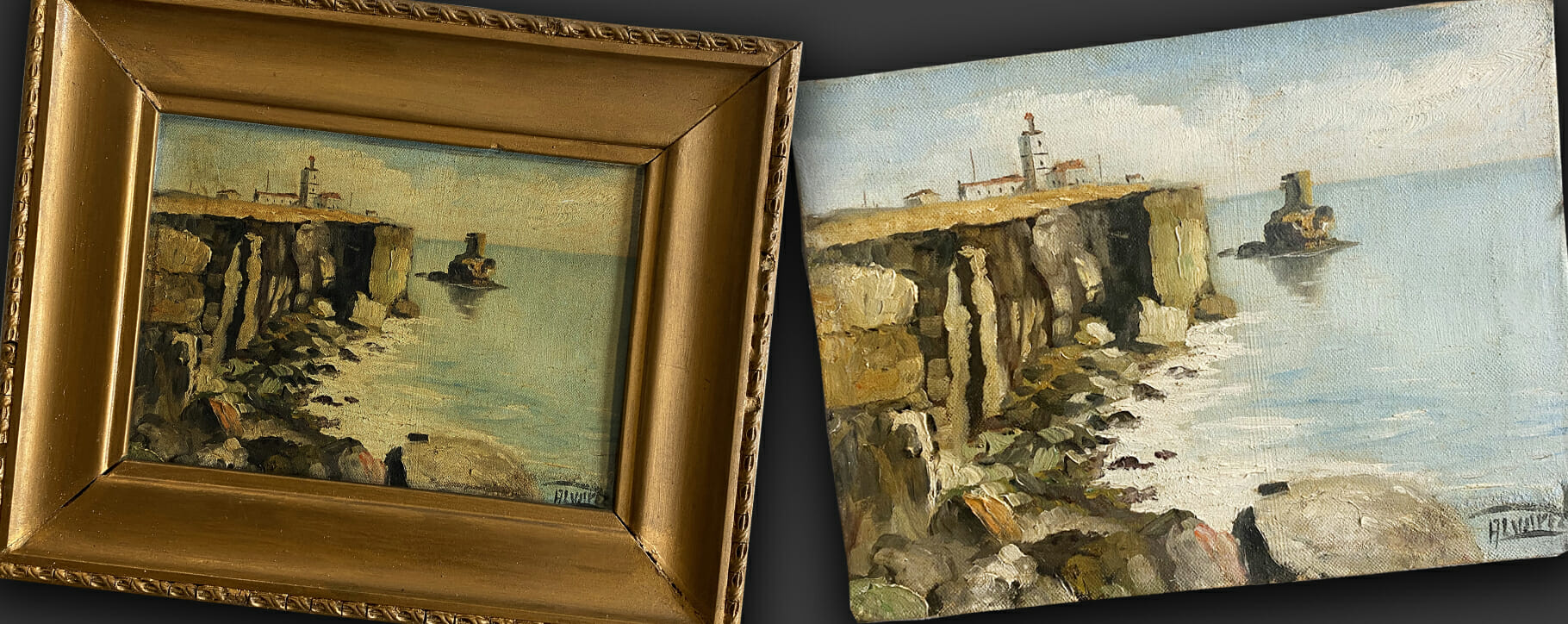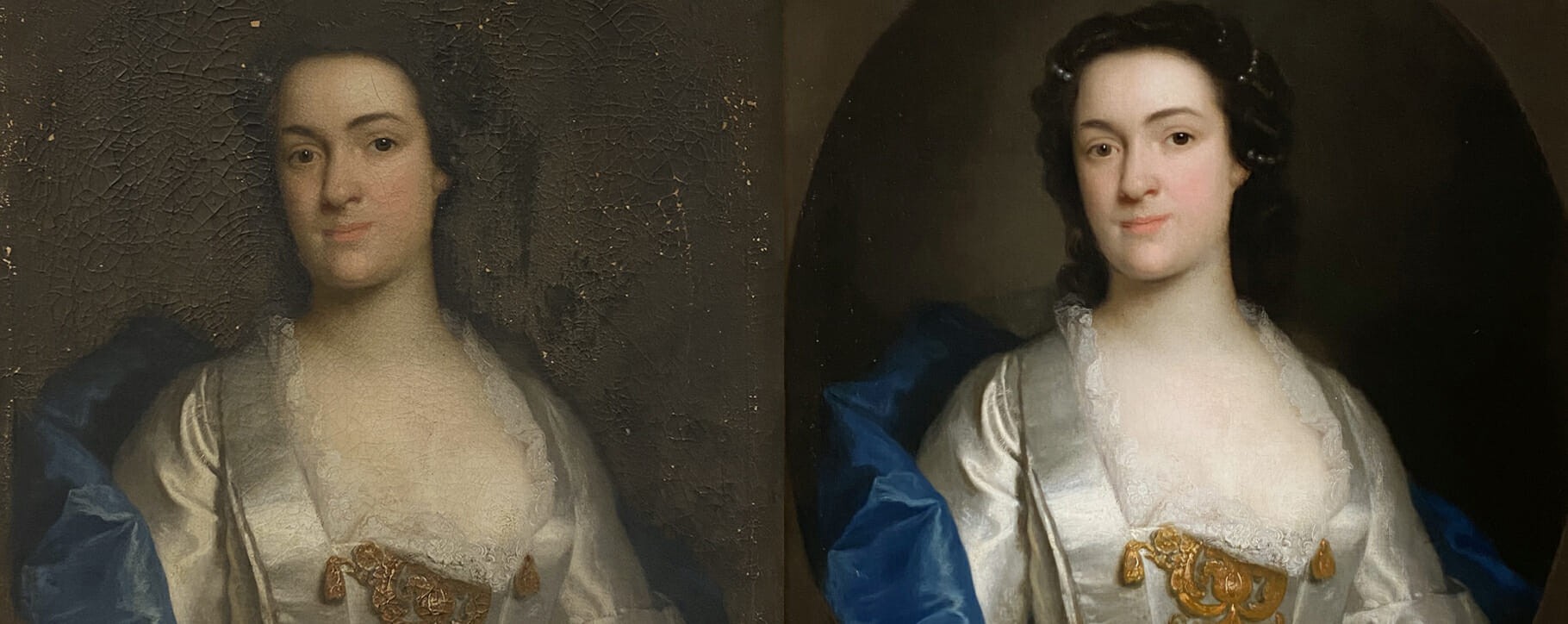As part of our disaster recovery services, we regularly receive fire and smoke damage paintings into the studio. A proportion of these paintings have sadly been damaged in house fires, in circumstances beyond the owner’s control.

For many other oil paintings and works on paper that have fire and smoke damage from open fire and heat sources, or years of smoking, preventable measures can be put into place. Artworks often suffer from severe soot and ash damage in the paint layer, as well as blistering, flaking, cracking and warping of the stretcher bars which can lead to tears and distortions. Cleaning smoke damaged paintings is frequently carried out, the difference between the paintings intended original state and the smoke damaged condition is striking.
Open Fires
When deciding on an appropriate location in your home to hang artworks, it’s understandable for you to want to have them taking pride of place, where visitors will be best able to admire your collection. In many homes, this will be in a central position to make the biggest impact, which in some cases is above a stately fireplace. But the continued smoke, heat and stray ash from open fires or stoves will cause a variety of restoration treatments to be required.

It is best for the continued stable condition of the painting to hang it in a room without open heat sources and away from radiators. If it isn’t possible or preferable to hang your artworks in a room without a fire, then you may want to consider adding glass to your artwork. Although oil paintings are best suited to not being enclosed in glass, museum-quality conservation glass should be purchased and suitable spacers installed between the glass and the painting.
Smoking
Sustained heavy smoking in the proximity of paintings will greatly contribute to their discolouration. Over time, the painting will become stained and take on a yellowish hue.

Often in such cases, key details of the painting will be obscured and the vibrancy of the artwork will be substantially diminished. A professional solvent based clean will remove the perished varnish layer and the contaminants that have seeped into the paint layer.
What should you do if your painting is smoke or fire damaged?
As a first step, oil paintings should not be touched or wiped, as this will cause the grinding of the particles into the painted surface and subsequent damage. Trying to paint over the surface in an effort to ‘re-colour’ the artwork should also not be attempted. Treating a painting that has suffered smoke or fire damage is specialist work, and the painting will benefit more by being left untouched.

A trained conservator will be able to clean the painting and remove the fine particles of soot and ash without compromising the structural or aesthetic quality of the painting.
We can provide a full assessment of your artworks, including detailed recommendations and a treatment plan for each affected piece.
You can read more about our disaster recovery and accidental damage services, or contact us for further obligation-free advice.






